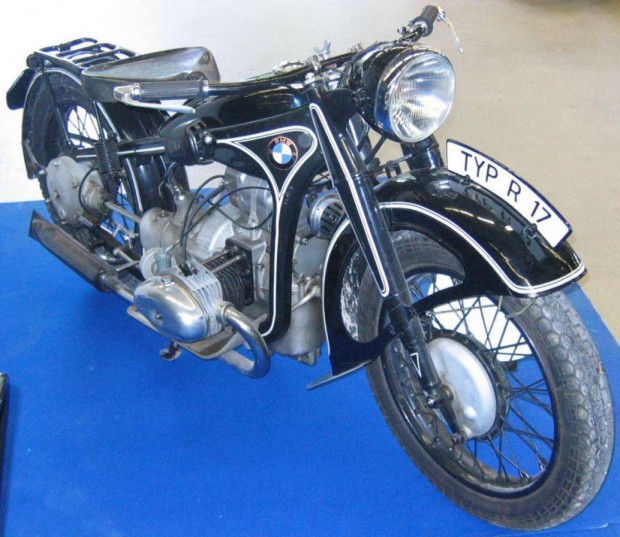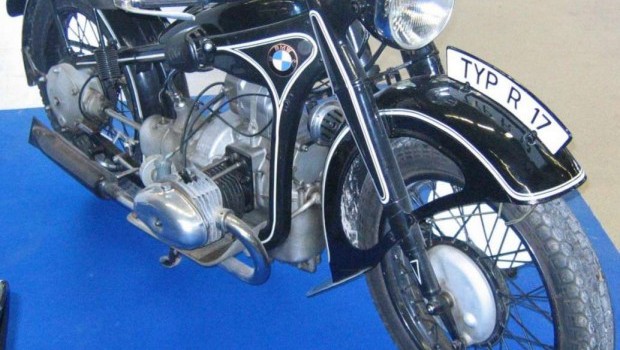HISTORY OF THE FRONT END – PART III
THE TELESCOPIC FORK
Ninety nine years ago, Alfred Angas Scott released the 1908 Scott.
It had water cooling, a lightweight duplex frame, and a low centre of gravity. It also had telescopic forks.
Its roadholding was pronounced superb. The forks had no damping, so you can imagine what the competition handled like.
Scott never persevered with telescopic forks. Later models of his motorcycles had girder forks.

The 1934 Fisker & Nielsen Nimbus – the first hydraulically damped telescopic forks in the world
In 1934, the Danish vacuum cleaner company Fisker & Nielsen (makers of the Nilfisk vacuum cleaner) decided they would build a motorcycle. They called it the Nimbus. It had an oil damped telescopic fork up front, the first time such an item appeared on a motorcycle. Between 1934 and 1960, Fisker and Nielsen built 12,000 motorcycles. 4,000 of them are still running today.
One model had a 20mm anti-tank cannon mounted on a sidecar frame. It’s wasn’t the sort of motorcycle that people took off you.
BMW were impressed. They added telescopic forks to the R17 model they released the next year. And they made telescopic forks their standard front end for twenty years.
God knows why.

The 1935 BMW R17: BMW adopts the telescopic fork
Telescopic forks dive under brakes, upsetting the stability of the motorcycle. The suspension is under stress at this time and not only does it lose most of its travel, but it loses sensitivity to bumps as the fork tubes bind and static friction takes over. The front wheel is held at the bottom of two long levers which have a large amount of mechanical advantage over the steering head, so the frame starts to twist. To minimize frame twist you have to brace the steering head, which makes the motorcycle top heavy. And while they’re not as bad as girders, the wheelbase changes as the suspension reacts to bumps or weight transfer.

The Honda TRAC system: Honda’s anti-dive for telescopic forks
But, they’re cheap to make. And they look kind of cool — all sleek and self-contained, not like those girder forks with bits going everywhere. So the stylists love them. And you can get a fair bit of travel out of them without the wheelbase changing too much.
BMW were considered leaders in quality and reliability, and most of the rest of the world followed.
In 1955, BMW abandoned the telescopic fork. The rest of the world didn’t.
But, over the years, the rest of the world made a big effort to engineer around some of the telescopic fork’s shortcomings. The dive under brakes could be reduced by using progressive fork springs, so most forks ended up containing a pair. The forks could be pressurized with air, making the spring rate even more progressive.
In 1968, BMW started using telescopic forks again. In 1970, all their motorcycles had telescopic forks.

Kawasaki’s AVDS: right thinking people took them off and blocked the holes with bolts
In 1969, Honda introduced TRAC – Torque Reactive Antidive Control. The brake caliper pivoted on its mounting. When the brake was applied, it rotated around its pivot and pressed against a valve which cut oil flow and increased damping in the fork.
By the eighties, Kawasaki had AVDS – Automatic Variable Damping System. Hydraulic pressure from the brake hose was used to close damping valves under brakes. Yamaha and Suzuki had similar systems.
The problem with this approach was that increasing damping doesn’t prevent dive. It just slows it down. Road testers never seemed to rave about how heavy compression damping under brakes made the motorcycle better. And in fact, in the mid nineties, Yamaha put a feature on their motocrossers called BASS (Brake Actuated Suspension System) which REDUCED damping under brakes in order to combat wheel hop.
Motorcycles got faster and heavier, and the forks got thicker to control the flex inherent in them. Designers started bracing the fork above the front wheel. Steering heads got better braced. Superbikes used to have 19 inch front wheels. Designers went as low as 16 inches, allowing them to reduce the length of the fork and its ability to feed stresses into the frame.

The Saxon-Motodd system: BMW’s “Telelever”
The next big advance in telescopic forks came in the eighties. The British company Saxon-Motodd connected the above-wheel fork brace to the front of a pivoted wishbone via a ball joint, and connected a spring-damper unit to the wishbone.
This design fixed several of the conventional telescopic fork’s shortcomings. For a start, stresses were fed into the frame at widely separated points instead of into an over-stressed steering head. There was less variation in wheelbase as the suspension cycled. Unsprung weight was reduced. The system had natural anti-dive.
It also kind of looked like a conventional front end at first glance, so it wasn’t going to upset the conservatives too much.
BMW incorporated this into their 1994 model range and called it “Telelever”. It worked well.
Surprisingly, no other manufacturers have seen fit to copy this design. Not only that, but BMW have retained telescopic forks for their competition motorcycles. Despite their innate shortcomings, telescopic forks have had the world’s best design and engineering brains working on them for nearly a hundred years, and a well designed and manufactured telescopic fork works pretty damn well.
But, the telescopic fork is at the end of its development cycle. Pretty well everything that can be done to make a telescopic fork better has been done. There are several other suspension technologies that are at the beginning of THEIR development cycles.









